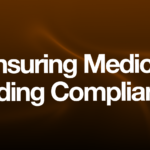
Clinical documentation is a cornerstone of healthcare, playing a crucial role in ensuring quality patient care, accurate data collection, and efficient healthcare operations. Government and regulatory agencies mandate strict standards for clinical documentation to achieve these goals. This article delves into the critical aspects of clinical documentation: legibility, reliability, precision, completeness, consistency, clarity, and timeliness.
Legibility of Clinical Documentation
Legibility is a fundamental requirement for clinical documentation mandated by all government and regulatory agencies. Clear, readable documentation ensures that healthcare providers can accurately understand and follow the treatment plans, medication instructions, and patient histories. Illegible notes can lead to misunderstandings, errors in patient care, and potential legal liabilities. The move towards electronic health records (EHRs) has significantly improved legibility, making it easier for healthcare professionals to access and interpret patient data.
Reliability of Clinical Documentation
Reliability in clinical documentation refers to the accurate recording of the treatment provided, impacting the quality of patient care directly. Reliable documentation ensures that the care administered is appropriately recorded, which is vital for continuity of care and for assessing the effectiveness of treatment protocols. Treatment provided without corresponding documentation of the condition being treated can adversely affect patient outcomes, as future healthcare providers may lack critical information needed for decision-making.
Precision of Clinical Documentation
Precision in clinical documentation involves accurately detailing the patient’s condition and the care episode. Specific diagnoses and thorough documentation lead to better data quality and enhance medical research. Precise documentation tells the complete story of a patient’s healthcare journey, facilitating more accurate diagnoses, tailored treatments, and effective patient care management. For example, providers should document the stage of chronic kidney disease, the laterality of pain (right, left, bilateral). The accuracy of this data is critical for clinical studies, health policy planning, and improving overall healthcare delivery.
Completeness of Clinical Documentation
Completeness ensures that all aspects of patient care are documented, including abnormal test results and their clinical significance. The Joint Commission requires documentation of the clinical significance of all test results. Incomplete documentation can lead to gaps in patient care, making it difficult to provide comprehensive treatment. For example, if abnormal test results are not documented with their clinical implications, it may result in overlooked conditions and inadequate patient management.
Consistency of Clinical Documentation
Consistency in clinical documentation is essential for the continuity of patient care. Consistent documentation ensures that all healthcare providers involved in a patient’s care have a clear and unified understanding of the diagnoses and treatments. For example, if a patient is diagnosed with hypertension once, it would not be appropriate to document it as high-blood pressure thereafter. Discrepancies between the documentation of different treating physicians, without obvious resolution, can delay billing, reimbursement, and impact the quality of patient data. Consistent documentation helps avoid confusion, ensures seamless care transitions, and supports accurate data reporting.
Clarity of Clinical Documentation
Clarity in clinical documentation is vital for effective communication among healthcare providers. Clear documentation of signs, symptoms, and conditions—especially distinguishing between acute and chronic conditions. For instance, a provider should determine when to document bronchitis as chronic instead of unspecified bronchitis or acute bronchitis. An Ambiguous or vague documentation can lead to misinterpretations, incorrect treatment decisions, and coding errors, ultimately affecting patient outcomes and hospital metrics.
Timeliness of Clinical Documentation
Timeliness in clinical documentation is governed by guidelines set by facilities, the Centers for Medicare and Medicaid Services (CMS), state governments, the Joint Commission, and other regulatory bodies. Prompt documentation ensures that patient records are up-to-date, facilitating immediate access to current patient information for ongoing care. Regulatory changes, such as the implementation of accountable care organizations (ACOs) and bundled payments, incentivize efficient and effective care, requiring physicians to document as specifically and completely as possible. Timely documentation supports accurate billing, reduces the risk of denied claims, and enhances patient safety by providing current and comprehensive patient information.
Conclusion
Clinical documentation is a multifaceted component of healthcare that significantly influences patient care quality, data accuracy, and healthcare efficiency. Legibility, reliability, precision, completeness, consistency, clarity, and timeliness are essential elements that healthcare providers must uphold to meet regulatory standards and deliver optimal patient care. As healthcare continues to evolve, the emphasis on meticulous and comprehensive documentation will only grow, underscoring its pivotal role in the healthcare ecosystem.






No comment yet, add your voice below!